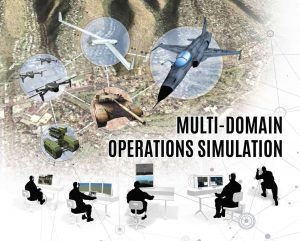
A Boeing 737 sits in an aircraft hangar, waiting to be inspected. Having flown through a thunderstorm and struck by lightning, damage to the fuselage was suspected. In walks a maintenance engineer who examines a particular area near the wings for signs of impact such as pits and burn marks.
Once the checks are done, he pulls off a virtual reality (VR) headset with a visor that stretches across his eyes. His surroundings dissolve, and he is in fact standing in the office. He had just completed a virtual training module.
Nearby are two fellow engineers, still donning VR headsets, their backs are bent and wrists twisting as if using a wrench. They are participating in a virtual team-based training session, taking on different roles in the aircraft engine repair process.
Extended reality (XR), which encompasses VR, augmented reality (AR) and mixed reality (MR), is increasingly being used in such ways to perform engaging and effective training.
Global market intelligence firm IDC forecasts that worldwide spending on AR and VR will deliver strong growth, rising from US$12 billion in 2020 to a whopping US$72.8 billion in 2024.
Not only does XR transform and redesign existing business processes, it is now set to be a game changer for training – creating immersive experiences for teams without them having to be physically in the same place or on site, and allowing employees to train more regularly, conveniently and safely.
Overcoming dicey situations with XR
Imagine having to defuse a car bomb or handle heavy machinery in an unfamiliar environment like an oil rig for the first time. How do you prepare for such scenarios and operations?
Where traditional modes of training are impractical, XR can be the solution. We refer to such situations as “DICE” – dangerous, impossible, counterproductive and/or expensive.
Very often, it is costly and perhaps even unsafe to do training for these dicey situations. But today, we are able to harness the power of XR to create virtual scenery and “digital twins” of appliances, that allow procedures to be observed or practised virtually.
Not only does this overcome resource constraints and risk of damage to operational appliances, trainees also get to visualise scenarios of malfunctions and even emergencies, along with the associated remedial procedures.
Procedural training in action
The advancement of technology has today also unlocked opportunities for new modes of training and the development of more sophisticated content. With the aim to provide leading-edge simulation training, we have developed the SMART Procedural Training suite that comprises of four platforms – Gamified CBT (Computer-Based Training), Interactive AR, Collaborative VR and Assistive Live Display systems.
Using gamification, we make training more accessible and engaging, by motivating participants with features such as in-game puzzles, achievement badges and pictorial maps that allow them to visualise their overall progress. The goal is to create a training experience that will leave a vivid and lasting impression, rather than one that feels like a chore.
Where individual proficiency and teamwork are essential for work performance, we provide VR training systems that enable distributed yet collaborative training for teams. Using our VR collaborative platform, multiple trainees can join in the same training scenario over a network, where they practise the procedures virtually with the avatars of their teammates, allowing each individual gets familiar with their roles.
We leverage AR to create mobile training platforms with 3D visualisations that enable trainees to learn anytime and anywhere, including interactions with virtual equipment and watch demonstrations by animated human characters.
The combination of AR with computer vision technology also allows us to create live display overlays, in assistive devices for operations. A maintenance personnel, for example, is able to get on-the-spot training for repair and replacement procedures, without the need to refer to manuals. The visual aids are loaded and displayed in the devices according to what is detected in the actual scene.
Apart from applications in the manufacturing industry, AR technologies can also be applied in construction and healthcare industries where devices can be operated via voice control, allowing tasks to be carried out independently by personnel without the need for an “extra hand” or diverting their attention from the task at hand.
Beyond providing personnel with opportunities to practice the physical aspects of their job, such virtual training platforms also help them to build up the psychological aspects – honing their recall ability and their judgement.
Judgemental training

How do you respond when threatened with a weapon? There are several factors to consider, including the weapon type and the circumstances, before making a judgement call.
Such split-second decisions are necessary but tough, and can be affected by a person’s state of mind.
By using VR technologies, we are now able to build immersive training programmes where the actual scenarios and environments are replicated using 3D visual models. One of our solutions is used to train public security officers, in which trainees are placed in settings where they need to decide on the appropriate use of force in each.
With realistic visuals, time pressure and noise distractions, trainees experience a level of stress that is close to that of the situation in real life. This helps them to develop coping mechanisms and the ability to perform reliably despite the circumstances.
Instructors are also able to track their movements, and measure reaction times to assess the trainees’ skills, like target recognition ability and general marksmanship.
These applications show that slowly, but surely, XR has evolved from being an extremely niche offering, to technology that is integrated into our work processes, and is even pervasive in our everyday lives. Moving forward, organisations will have to think about how they can leverage XR to enhance training, elevate organisational capabilities and to create value for customers. It is no longer hype – but the reality of today.
Watch how Extended Reality is applied in today’s world.











